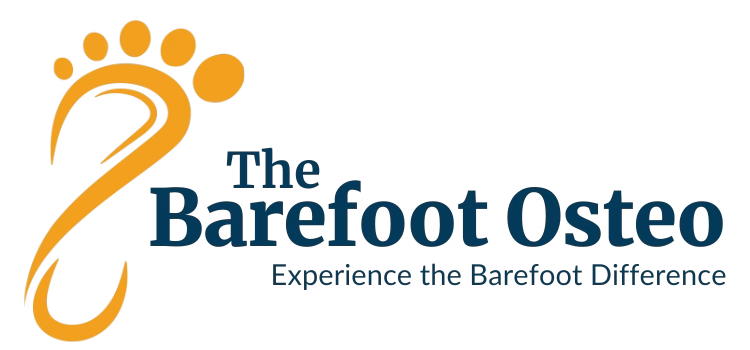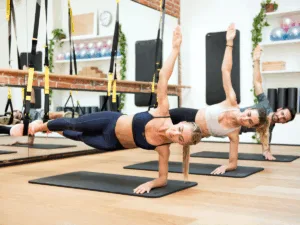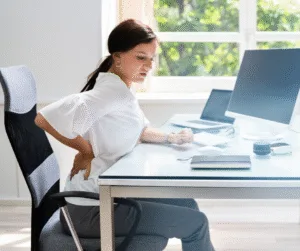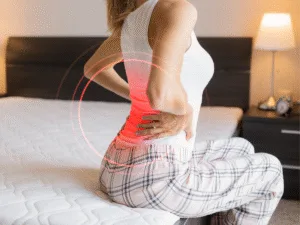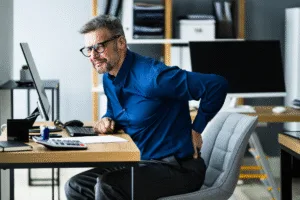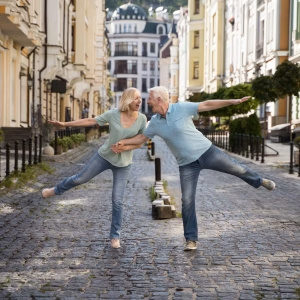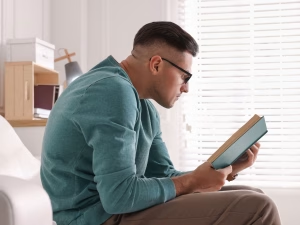At its core, life is motion. From the subatomic level to the movements we make every day, motion is essential for health, vitality, and well-being. As A.T. Still, the founder of osteopathy, once said, “Motion is the first and only evidence of life.” Whether we are consciously active or at rest, our bodies are in a state of perpetual motion—breathing, circulating blood, adjusting to internal and external stimuli.
At The Barefoot Osteo Warrnambool, we embrace the philosophy that movement is central to life. Our holistic approach to osteopathy focuses on restoring, maintaining, and enhancing mobility, stability, and balance to ensure your body can function as it was designed. Through gentle manual techniques, we help our clients regain their natural movement patterns, reduce pain, and improve their quality of life.
This blog explores why motion is so essential to life and how our osteopathic treatments can support your journey towards better health and well-being.
The Importance of Motion in Life at Every Level
Motion is integral to life in ways we may not always see or understand. At the microscopic level, motion occurs constantly as electrons orbit atoms, creating bonds between molecules. These interactions give shape to everything from the cells in our bodies to the structures that make up our world. Even the simplest biological processes—such as the movement of nutrients through cell membranes or the contraction of muscle fibers—depend on motion.

But motion is not just limited to the microcosmic level. It’s equally important in the macroscopic world, influencing our musculoskeletal, neurological, and cardiovascular systems. As we breathe, walk, and move throughout the day, our bodies are constantly adapting to maintain balance and health.
The concept of “motion is life” is central to osteopathy. In fact, A.T. Still believed that life is sustained by the free and unrestricted movement of fluids through the body—especially blood. This is why osteopathic principles emphasize the importance of circulation and why one of the foundational principles of osteopathy is that “the rule of the artery is supreme.” Simply put, motion is essential to maintaining the body’s health, and restrictions in motion can lead to dysfunction and disease.
Motion, Flexibility, and Longevity
One of the key ways motion supports health is by maintaining flexibility and mobility. As we age, it’s common for muscles, joints, and connective tissues to stiffen, reducing our range of motion and making everyday activities more difficult. This can lead to discomfort, reduced mobility, and even injury.
Regular movement, however, helps keep your muscles supple, your joints mobile, and your connective tissues flexible. This not only allows you to move freely and easily but also prevents the stiffness and pain that can come with a sedentary lifestyle. In fact, research shows that maintaining flexibility and regular movement is directly linked to longevity and overall vitality. When you consistently engage in gentle stretching or low-impact activities like walking or swimming, you not only enhance your physical capabilities but also reduce your risk of developing chronic conditions such as arthritis, osteoporosis, and cardiovascular disease. These activities promote circulation, improve muscle tone, and enhance joint health, ensuring that your body remains resilient as you age.
The importance of regular movement becomes even more evident when we consider its impact on long-term mobility. Individuals who maintain an active lifestyle often experience better balance, coordination, and strength as they age, significantly reducing their risk of falls or injuries. This is crucial, as falls are one of the leading causes of injury in older adults. By incorporating movement into your daily routine, you’re actively preserving your independence, ensuring that you can continue to engage in the activities you love for years to come.
The Impact of Motion on Mental and Emotional Health
Motion doesn’t just benefit your physical body; it also plays a crucial role in your mental and emotional well-being. Studies have shown that regular physical activity can reduce stress, improve mood, and even alleviate symptoms of anxiety and depression.
Movement stimulates neuroplasticity, the brain’s ability to adapt and form new neural connections, which can enhance cognitive function, improve memory, and reduce the risk of cognitive decline as we age. But neuroplasticity doesn’t only occur in the brain—your body is constantly responding to new stimuli, particularly in the form of movement and exercise. Each time you engage in a new physical activity or challenge your body with movement, your nervous system begins rewiring itself to improve efficiency. Whether you’re learning a new exercise routine or simply taking a different walking path, your body adjusts, creating stronger neural pathways to support these movements. Over time, this rewiring helps improve muscle memory, coordination, and overall motor function. Regular exercise not only strengthens the brain-body connection but also promotes a healthier, more adaptive nervous system, allowing you to move with more ease, precision, and confidence.
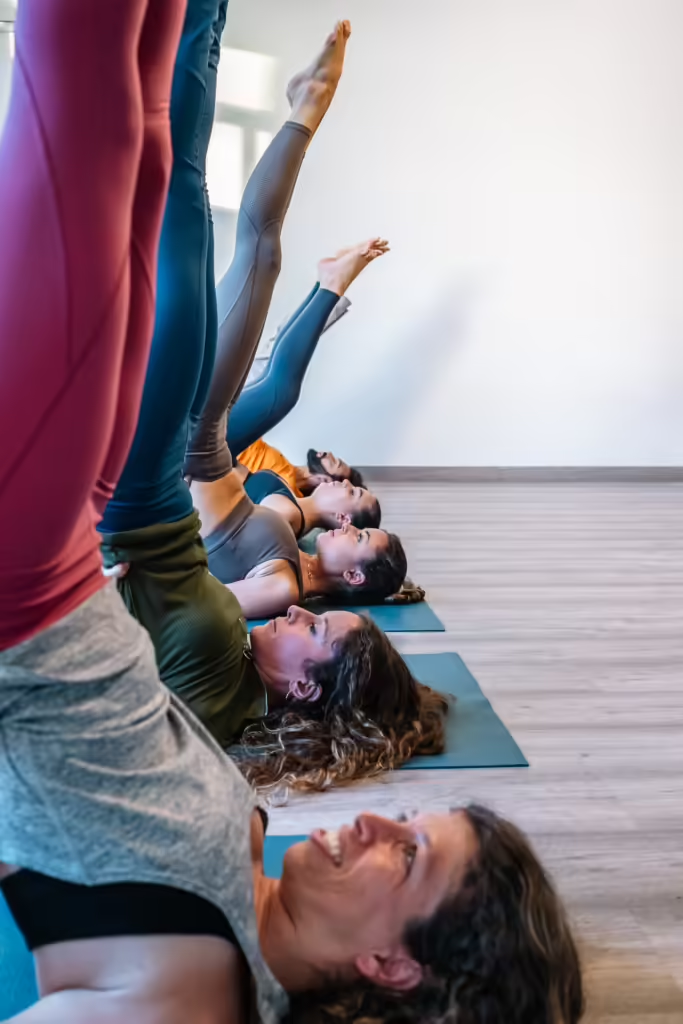
At The Barefoot Osteo, we recognize the powerful connection between body and mind. By focusing on movement and balance in our treatments, we not only help our clients improve their physical health but also support their mental and emotional well-being. Whether it’s a gentle adjustment or a focused rehabilitation exercise, every treatment is designed to help you move better, feel better, and live better.
Why Stability, Mobility, and Balance Matter in Motion is Life
At The Barefoot Osteo, we emphasize three core principles in our treatments: stability, mobility, and balance. These are the pillars of long-term health and well-being and are essential to maintaining a healthy and active lifestyle.
- Stability: Building a strong foundation ensures that your body is properly aligned and able to support movement without injury. Stability is key to preventing strain and maintaining proper posture, especially as we age or recover from injuries.
- Mobility: Without mobility, our bodies become rigid and less functional. Improving your range of motion allows you to move freely and without pain, enhancing your quality of life.
- Balance: Balance is the key to staying coordinated and reducing the risk of falls. By improving balance, you can feel more confident in your movements and stay active for longer.
These three principles are central to our treatments, and by focusing on them, we can help you improve your overall health, reduce pain, and prevent injury.
Osteopathy and the Restoration of Motion is Life
Osteopathy’s core philosophy revolves around the body as an interconnected whole, where structure and function are closely linked. When the structure of the body is compromised—whether through injury, postural issues, or chronic conditions—it affects function, leading to pain and limitations in movement. In osteopathy, the principle that “motion is life” is at the heart of treatment. By restoring natural movement in the body, osteopaths aim to enhance the body’s inherent ability to heal itself. Movement encourages proper circulation, supports fluid exchange, and maintains the flexibility of tissues, which are all necessary for life to thrive.
Osteopathic principles emphasize that the body has the capability to heal and maintain itself, provided there is free motion in all systems. By improving motion through manual techniques, we address restrictions that hinder this flow, whether it’s blood, lymph, or nerve impulses. This return to natural movement ensures that the body’s systems can function optimally, reinforcing the idea that life itself is dependent on the freedom to move. At The Barefoot Osteo, we help guide your body back into this state of motion, where health and vitality can flourish.

Taking Action: How The Barefoot Osteo Can Help You Move Better
If you’ve been struggling with pain, stiffness, or reduced mobility, the time to act is now. At The Barefoot Osteo Warrnambool, we offer personalized osteopathic treatments designed to help you move better and feel better. Our holistic approach means we consider the whole body in our treatments, focusing on restoring motion, improving circulation, and promoting overall health.
Whether you’re dealing with chronic lower back pain, recovering from an injury, or simply want to maintain your mobility as you age, we’re here to help. Our treatments are gentle, non-invasive, and designed to work with your body’s natural healing mechanisms.
Take the first step towards better movement and a healthier life by booking an appointment with The Barefoot Osteo today. Let us help you restore balance, stability, and mobility, so you can enjoy life to the fullest.
References
Blechschmidt, E. (2004). The ontogenetic basis of human anatomy: A biodynamic approach to development from conception to birth. North Atlantic Books.
Davis, G., & Bezprozvanny, I. (2001). Maintaining the stability of neural function: A homeostatic hypothesis. Annual Review of Physiology, 63, 847-869.
Emoto, M. (2005). The hidden messages in water. Beyond Words Publishing.
Galea, L. A., Uban, K., Epp, J., Brummelte, S., Barha, C., Wilson, W., et al. (2008). Endocrine regulation of cognition and neuroplasticity: Our pursuit to unveil the complex interaction between hormones, the brain, and behavior. Canadian Journal of Experimental Psychology, 62(4), 247-260.
Garland, E., & Howard, M. (2009). Neuroplasticity, psychosocial genomics, and the biopsychosocial paradigm in the 21st century. Health and Social Work, 34(3), 191-199.
Greenman, P. (2003). Principles of manual medicine. Lippincott Williams and Wilkins.
Hart, H., Craine, L., Hart, D., & Hadad, C. (2007). Organic chemistry: A short course (12th ed.). Houghton Mifflin Company.
Haslett, C., Chilvers, E. R., Boon, N. A., & Colledge, N. R. (Eds.). (2002). Davidson’s principles and practice of medicine (19th ed.). Churchill Livingstone.
Korr, I. M. (1975). Proprioceptors and somatic dysfunction. Journal of American Osteopathic Association, 74, 638-650.
Kozorovitskiy, Y., & Gould, E. (2003). Adult neurogenesis: A mechanism for brain repair. Journal of Clinical and Experimental Neuropsychology, 25(5), 721-732.
Lederman, E. (2005). The science and practice of manual therapy. Elsevier Churchill Livingstone.
Maino, D. (2009). Neuroplasticity: Teaching an old brain new tricks. Review of Optometry, January, 62-70.
Marie, M., Plautz, E., & Kleim, J. (2005). In search of the motor engram: Motor map plasticity as a mechanism for encoding motor experience. The Neuroscientist, 11(5), 471-479.
McKone, L. (2001). Osteopathic medicine: Philosophy, principles and practice. Blackwell Science Ltd.
Oschman, J. (2008). Charge transfer in the living matrix. Journal of Bodywork and Movement Therapy, 13, 215-228.
Pert, C. (1997). Molecules of emotion. Touchstone.
Pitternger, C., & Duman, R. (2008). Stress, depression and neuroplasticity: A convergence of mechanisms. Neuropsychopharmacology, 33, 88-109.
Sahrmann, S., Azevedo, D. C., & Dillen, L. V. (2017). Diagnosis and treatment of movement system impairment syndromes. Brazilian journal of physical therapy, 21(6), 391–399.
Selye, H. (1974). Stress without distress. Hodder and Stoughton.
Sharma, N., Baron, J. C., & Rowe, J. (2009). Motor imagery after stroke: Relating outcome to motor network connectivity. Annals of Neurology, 66(5), 604-616.
Still, A. T. (1986). Philosophy and mechanical principles of osteopathy. Hudson-Kimberly Publisher.
Turrigiano, G. (2008). The self-tuning neuron: Synaptic scaling of excitatory synapses. Cell, 135(3), 422-435.
